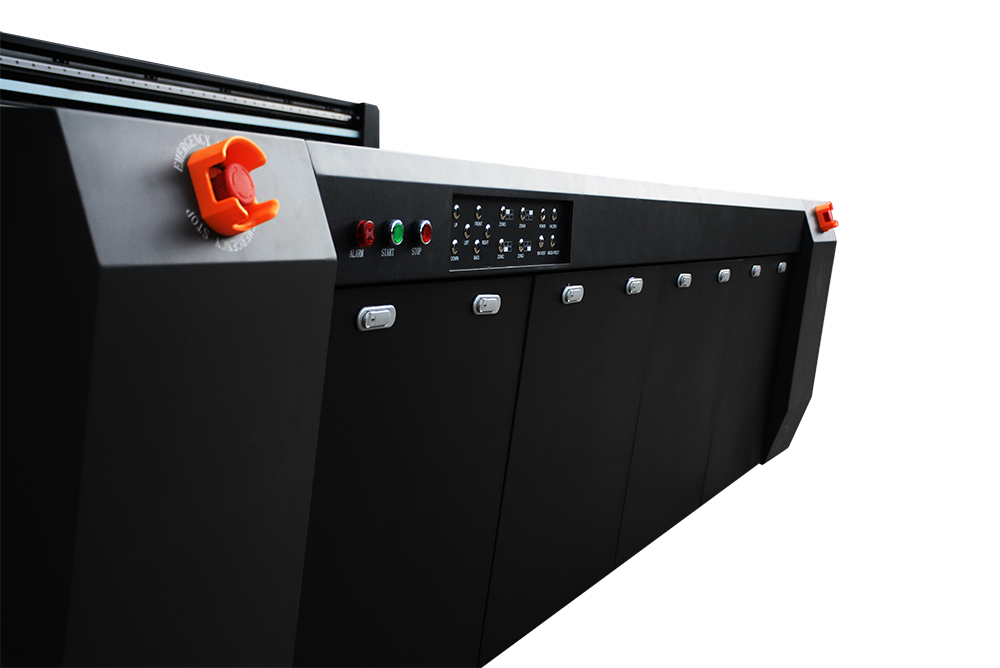UV Flatbed Printer: Understanding DPI and Print Resolution
UV Flatbed Printer: Understanding DPI and Print Resolution
In the realm of digital printing, UV flatbed printers have revolutionized the way we create high-quality, durable prints on various surfaces. These versatile machines are capable of printing on materials such as glass, metal, plastic, wood, and even leather, making them a popular choice for businesses in the advertising, signage, and decorative industries. One of the key factors that contribute to the exceptional print quality of UV flatbed printers is their ability to produce high-resolution images. This article aims to provide a comprehensive understanding of DPI (Dots Per Inch) and print resolution in the context of UV flatbed printing.

What is DPI?
DPI, or Dots Per Inch, is a measure of the resolution of a printed image. It refers to the number of individual dots of ink or toner that a printer can place within a one-inch line. A higher DPI value indicates a higher resolution, which translates to finer detail and sharper images. In digital printing, DPI is often used interchangeably with PPI (Pixels Per Inch), especially when referring to the resolution of digital images.
Print Resolution in UV Flatbed Printing
UV flatbed printers are known for their ability to produce prints with exceptional detail and color accuracy. This is largely due to their high print resolution, which can range from 300 DPI to over 1400 DPI, depending on the model and print mode. The print resolution of a UV flatbed printer determines the clarity and sharpness of the final print, affecting both the visual impact and the overall quality of the output.
Factors Influencing Print Resolution
Several factors influence the print resolution of a UV flatbed printer, including:
Printer Technology: The type of UV printing technology used, such as LED or laser, can affect the printer’s ability to place ink droplets accurately on the substrate.
Inkjet Nozzle Configuration: The number and arrangement of inkjet nozzles in the print head determine the density of ink droplets and, consequently, the print resolution.
Print Mode: UV flatbed printers often offer different print modes, such as standard, high-quality, and super-high-quality. Each mode has its own DPI setting, with higher-quality modes producing prints with finer detail.
Substrate Material: The surface texture and porosity of the substrate can impact the spread of ink droplets, affecting the print resolution.
Ink Type and Viscosity: The properties of the UV ink, including its viscosity and curing speed, can influence the print resolution by affecting the ink’s ability to adhere to the substrate and form precise dots.
Importance of DPI in UV Flatbed Printing
Understanding DPI and its impact on print resolution is crucial for achieving optimal print quality with UV flatbed printers. Here are some reasons why DPI matters:
Detail and Sharpness: A higher DPI results in finer detail and sharper images, making prints more visually appealing and impactful.
Color Accuracy: Higher print resolution allows for better color blending and gradient transitions, enhancing the overall color accuracy of the print.
Durability: Prints with higher DPI tend to have better ink adhesion and resistance to fading, scratching, and other forms of wear and tear, making them more durable.
Versatility: UV flatbed printers with adjustable DPI settings offer greater versatility, allowing users to tailor the print resolution to suit different applications and substrate materials.
Choosing the Right DPI for Your Project
Selecting the appropriate DPI for your UV flatbed printing project depends on several factors, including the intended use of the print, the viewing distance, and the substrate material. Here are some general guidelines:
Small Prints with Fine Detail: For prints that will be viewed closely, such as product labels or small signage, a higher DPI (e.g., 600 DPI or above) is recommended to ensure fine detail and sharpness.
Large-Format Prints: For large-format prints, such as billboards or wall murals, a lower DPI (e.g., 300 DPI) may be sufficient, as the viewing distance is greater, and the loss of detail may not be noticeable.
Outdoor Prints: Prints intended for outdoor use should have a higher DPI to ensure durability and resistance to environmental factors.
Substrate Material: Consider the texture and porosity of the substrate material. Rough or porous surfaces may require a higher DPI to achieve optimal print quality.
Enhancing Print Resolution with UV Flatbed Printers
To maximize print resolution and overall quality with UV flatbed printers, consider the following tips:
Use High-Quality Images: Start with high-resolution digital images to ensure that the printed output retains its detail and sharpness.
Choose the Right Print Mode: Select the appropriate print mode based on the desired print quality and the specific requirements of your project.
Calibrate Your Printer: Regularly calibrate your UV flatbed printer to ensure consistent print quality and accurate color reproduction.
Optimize Ink and Substrate Compatibility: Experiment with different ink types and substrate materials to find the combination that yields the best print resolution and ink adhesion.
Control Environmental Factors: Maintain a stable environment for your UV flatbed printer, as temperature and humidity can affect print quality and ink curing.
Conclusion
UV flatbed printers offer unparalleled versatility and print quality, making them an excellent choice for businesses seeking to create high-resolution prints on various surfaces. Understanding DPI and its impact on print resolution is essential for achieving optimal print quality and ensuring that your prints meet the specific requirements of your projects. By considering the factors that influence print resolution and following best practices for enhancing print quality, you can unlock the full potential of your UV flatbed printer and produce exceptional prints that leave a lasting impression.
